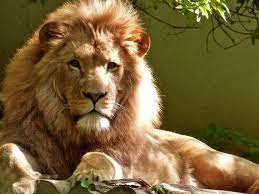A Preview of King Messiah

John’s prologue is not unlike a Rubik’s Cube, the exasperating puzzle-toy of the 1970s. You can’t change one sentence of the prologue without causing logical problems with the others. Joseph Smith (the founder of Mormonism, for example, altered John’s prologue in his “Inspired Version” of the Scriptures to support the notion that Christ is not God, but rather an exalted figure created by God before anything else. He failed, however, to account for verse three: Through Him all things were made; without Him nothing was made that has been made (John 1:3). According to Smith’s Inspired Version, the word created all things. Furthermore, anything that had a beginning was created by the word. But, if there was a time when Christ was not, if He came into being at some point in time, then Jesus had to have created Himself before He existed. If that sounds like nonsense, you’re right. It is nonsense! Thus, on this point we can agree: without Him nothing was made that has been made. Messiah could not have made Himself; therefore, He is God and He created all things.11
The Jehovah’s Witnesses have the same problem. Their translation of John 1:1 says: In the beginning was the word, and the word was with God and the word was a God (New World Translation). The reason they give for translating the end of the verse: a God, is that God does not have the definite article in front of it. But, definite nouns in the New Covenant that precede the verb, literally God (noun) was (verb) the Memra, regularly lack the definite article (to see link click Af – The Memra of God). In other words, both the Mormons and the Jehovah’s Witnesses violate basic Greek grammar to make their point. Once again, the Rubik’s Cube principle comes into play. The Watchtower teaches that Christ was the first “thing” God ever brought into existence. So they teach that Jesus is not God. Not only is He not God, they teach that He is Michael the Archangel. They believe that the personality of Michael the Archangel was somehow transferred to the womb of Mary, was born as a human to be the man, Jesus, and then when Christ returned to heaven at the end of His earthly ministry, He became Michael the Archangel again, but, in a more exalted position.12
Wow! I think it is best if we just believe what the apostle John wrote about the Memra: Through Him all things were made; without Him nothing was made that has been made (John 1:3). John’s prologue is structured as a chiasm. There is a parallelism, where the first letter is parallel to the second letter, and so on, with the letter D being the turning point.13
A The identity and mission of the Memra (John 1:1-5)
B The testimony of John the Baptist to the Memra (John 1:6-8)
C The incarnation of the Memra (John 1:9-10a)
D The response to the Memra (John 1:10b-13)
C The incarnation of the Memra (John 1:14)
B The testimony of John the Baptist to the Memra (John 1:15)
A The identity and mission of the Memra (John 1:16-18)
The rabbis teach that seven things were created before the world was created: Torah, repentance, the garden of Eden, Gehinnom, the throne of glory, the Temple, and the name of the Messiah (Tractate Pesachim 54a).



Leave A Comment